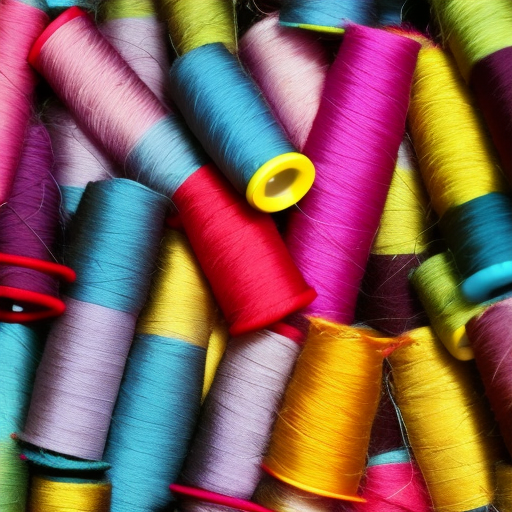
Whether you are an experienced seamstress or just starting out with your sewing hobby, you may encounter a frustrating issue when the thread bunches underneath the fabric while stitching. This problem can distort your stitches and ruin the overall quality of your sewing project. Luckily, there are several common causes, and solutions, to this frustrating issue.

1. Incorrect Tension Settings
One of the main reasons for thread bunching underneath is incorrect tension settings on your sewing machine. The tension regulates the tightness of the thread as it passes through the machine. If the tension is too loose, the thread may not properly lock the stitches, resulting in bunching underneath the fabric.
To fix this issue, check your sewing machine’s manual and adjust the tension settings according to the recommended settings for the specific fabric you are sewing. It may require some trial and error to find the optimal tension, but it will improve the stitch quality.
2. Improper Threading
Another common cause of thread bunching is improper threading of the sewing machine. It is important to follow the correct threading path as instructed in the manual to ensure smooth stitching. Make sure the thread passes through all the necessary guides and tension disks properly before reaching the needle.
Double-check the threading sequence and ensure the thread is securely seated in the tension disks. A loose or incorrectly threaded machine can lead to thread bunching underneath.
3. Needle Issues
A worn-out or damaged needle can also contribute to thread bunching. When the needle is dull or bent, it cannot properly pierce the fabric, leading to skipped stitches or thread tangling underneath. Additionally, using the wrong type or size of needle for your fabric can also cause similar issues.
Regularly replace your sewing machine needles, especially if you are working with thick or delicate fabrics. Ensure you choose the appropriate needle type and size based on the fabric’s weight and texture to prevent thread bunching.
4. Bobbin Problems
The bobbin, which holds the bottom thread, can sometimes be the culprit behind thread bunching. Make sure the bobbin is correctly inserted into the bobbin case, and the thread is properly wound and pulled through the tension mechanism, allowing smooth thread flow.
A damaged or incorrectly wound bobbin can disrupt the thread tension, causing it to bunch underneath. Check the bobbin for any rough edges or burrs that may catch the thread and replace it if needed.
“Understanding the causes of thread bunching is the first step towards ensuring impeccable stitch quality.” – Sewing Pro
By addressing these common causes, you can tackle the issue of thread bunching underneath while sewing. Remember to adjust the tension settings correctly, ensure proper threading, use the right needles, and check the bobbin for any problems.
With attention to detail and practice, you will achieve smooth and even stitches, allowing you to create beautiful sewing projects without the frustration of thread bunching!





It’s so frustrating when that happens!
Clive Lunderman: Ugh, I know! This can definitely be a tricky issue to solve! It’s important to be mindful of the tension on the backside of the fabric as you sew.
Absolutely! Adjusting the tension is key to prevent thread bunching. Much easier said than done.
Agreed! Taking your time and double-checking the tension settings are key. Re-threading your machine when necessary also helps.
Agreed, adjusting the tension is essential to avoiding thread bunching. Taking precautions like adjusting, double-checking, and re-threading when necessary can save time and frustration in the long run.
Very true—when thread bunches, it can be difficult to fix without a lot of time and effort. Keeping a close eye on the fabric is essential.
Definitely! Taking the time to get the tension right at the beginning is important to ensure you don’t end up having to fix thread bunching later.
So true! It’s best to take the time to adjust the tension carefully so you don’t have to deal with a bunch of thread snarls later on.